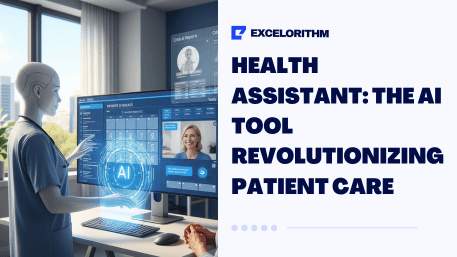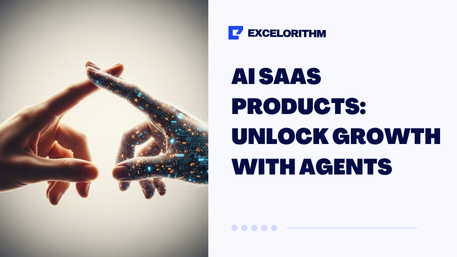
Introduction: Launch Is Only Half the Journey
Many businesses mistakenly believe that once a mobile app is launched, the bulk of the work is done. However, launching the app is only the beginning of its lifecycle. What follows is a long-term commitment to maintenance, which includes fixing bugs, improving performance, updating features, and ensuring security compliance. In 2025, as technology continues to evolve rapidly, mobile app maintenance has become more critical than ever. An unmaintained app can quickly become obsolete, vulnerable, and irrelevant in a competitive market.
In an era where user expectations are high and competitors are just a tap away, app maintenance is essential to ensure continuous user satisfaction, market relevance, and technological integrity.
The Importance of Ongoing App Maintenance
Failing to maintain an app can lead to a variety of issues that affect both user experience and business performance. Apps that are not regularly updated can suffer from slow performance, security vulnerabilities, and incompatibility with the latest versions of iOS and Android operating systems. This not only frustrates users but can also lead to negative reviews, decreased usage, and ultimately, revenue loss.
On the other hand, consistent maintenance ensures that an app stays relevant and functional. Regular updates allow businesses to:
- Respond to user feedback
- Stay compatible with new devices and OS versions
- Incorporate new features
- Improve speed and responsiveness
- Ensure regulatory compliance
Mobile apps are living systems that require ongoing care, just like websites or business processes. The longer an app is left unattended, the more complex and costly the fixes become.
Understanding Mobile App Maintenance Costs
The cost of maintaining a mobile app generally ranges from 15% to 25% of the initial development cost per year. For example, if an app costs $100,000 to develop, you can expect to spend between $15,000 and $25,000 annually on maintenance. In the first year, these costs might be even higher due to initial post-launch adjustments such as fixing unforeseen bugs, enhancing performance, and responding to early user feedback.
App Maintenance costs can be broken down into several categories:
- Bug fixes: Addressing user-reported issues
- Performance tuning: Enhancing speed, reducing crashes, and optimizing server load
- Security updates: Patching vulnerabilities and improving data protection
- UI/UX improvements: Enhancing user journeys based on analytics
- Compatibility updates: Adjusting for OS updates and new devices
- Third-party service updates: Ensuring continued integration with APIs and SDKs
Components of App Maintenance
Mobile app maintenance involves several technical and strategic tasks. These include bug fixes that address issues users encounter during app usage, security patches to fix vulnerabilities and protect user data, and performance optimization efforts to enhance speed and responsiveness.
Another key component is keeping the app compatible with the latest versions of mobile operating systems. With Apple and Google releasing updates regularly, apps need to be adjusted to prevent functionality issues. Additionally, user interface (UI) and user experience (UX) improvements are essential to ensure the app remains intuitive and engaging.
Maintenance also involves managing dependencies such as third-party APIs, SDKs, and backend systems. These external services frequently update their standards or features, requiring corresponding updates in the app. Hosting and server maintenance is another crucial aspect, as uptime, latency, and scalability directly impact user satisfaction and retention.
Key elements include:
- Server monitoring and uptime management
- Push notification maintenance
- App store compliance and version updates
- Data backups and recovery planning
- Crash analytics and log monitoring
Factors Affecting App Maintenance Costs
Several elements influence how much a company will spend on app maintenance:
- App Complexity: Apps with advanced functionalities, large data sets, or real-time interactions require more extensive maintenance.
- Technology Stack: Native apps often require separate updates for iOS and Android, whereas hybrid apps may save time but come with tradeoffs in performance.
- Platform Coverage: Supporting multiple platforms increases both development and ongoing maintenance efforts.
- User Base Size: A growing user base demands more robust backend performance, support infrastructure, and analytics.
- Frequency of OS Updates: Each mobile OS update can require immediate app testing and potential code adjustments.
- Integrated Features: The more third-party services (e.g., Stripe, Firebase, Google Maps) your app uses, the more updates are required to stay in sync.
Maintenance is not just about fixing things—it’s about adapting to continuous change and evolving expectations.
Proactive vs. Reactive Maintenance
When it comes to app maintenance, companies can adopt either a proactive or reactive approach.
Proactive Maintenance:
- Scheduled updates
- Regular code refactoring
- Security audits
- Analytics-driven improvements
- Early identification of potential issues
Reactive Maintenance:
- Only applied when something breaks
- Often more expensive and disruptive
- Leads to poor user experience and higher churn
A proactive approach is more strategic and cost-effective in the long term. It promotes app stability, security, and customer satisfaction.
In-House vs. Outsourced Maintenance
Companies face a critical decision in choosing between in-house and outsourced app maintenance. Maintaining an in-house team provides more control and potentially faster response times. However, it comes with significant costs, including salaries, benefits, infrastructure, and ongoing training. Building an in-house team also requires time, which can delay critical updates.
Outsourcing app maintenance, especially to regions with lower operational costs such as Pakistan, offers a more affordable and scalable alternative. Many companies in Pakistan provide specialized app maintenance services at a fraction of the cost compared to Western markets. These service providers often have experienced teams, mature development processes, and familiarity with international compliance standards, making them a reliable choice for businesses worldwide.
Advantages of outsourcing:
- Lower operational costs
- Access to specialized skills
- Round-the-clock support across time zones
- Flexibility to scale resources based on demand
Data-Driven Maintenance: The Role of Analytics
Modern app maintenance strategies are heavily reliant on data. Tools like Google Firebase, Crashlytics, and Mixpanel offer insights into how users interact with the app, where they drop off, and which features they engage with the most. By leveraging these analytics, businesses can prioritize maintenance tasks that have the highest impact on user satisfaction and retention.
Analytics also enable performance monitoring, helping developers detect issues like crashes, slow load times, or UI bottlenecks. Armed with this data, businesses can make informed decisions about updates, feature improvements, and even marketing strategies.
Popular tools used:
- Firebase for crash reporting and analytics
- Mixpanel for user behavior tracking
- Sentry for real-time error logging
- App Store and Play Store insights for review analysis
Building a Maintenance Budget and Roadmap
Planning a budget for app maintenance involves forecasting both fixed and variable costs. Fixed costs include server hosting, third-party service subscriptions, and licensing fees. Variable costs depend on user growth, feature complexity, and the frequency of updates.
A practical approach is to allocate 15–25% of the original development cost annually for maintenance. It is also wise to anticipate higher expenses in the first year post-launch. Developing a maintenance roadmap ensures that updates are timely, strategic, and aligned with business goals. This roadmap should include scheduled updates, security audits, performance tests, and UI/UX evaluations based on user feedback.
Steps to building a roadmap:
- Audit your existing tech stack and maintenance history
- Prioritize user-facing and security-related issues
- Plan quarterly releases aligned with OS updates
- Track KPIs for speed, crash rate, and user retention
- Incorporate stakeholder and user feedback continuously
App Maintenance Pricing Models
When planning for app maintenance, understanding the different pricing models is crucial for budgeting and selecting the right service provider. Various models exist, each with its advantages and ideal use cases. Here are the most common app maintenance pricing structures:
1. Time and Materials (Hourly) Model
In this model, you pay for the actual hours spent on maintenance tasks such as bug fixes, updates, or feature enhancements. This approach offers flexibility — you only pay for what you use, making it suitable for projects with unpredictable maintenance needs. However, costs can vary month to month, which may complicate budgeting.
2. Monthly Retainer Model
A monthly retainer is a fixed fee that covers a predefined scope of maintenance services. This model provides predictable costs and ensures that your app receives regular updates, monitoring, and support. It’s ideal for businesses that need consistent, ongoing maintenance and want to avoid unexpected expenses.
3. Package-Based Model
Some providers offer maintenance packages tailored to different business needs, bundling a set number of hours or tasks per month or quarter. Packages may include bug fixes, security updates, performance optimization, and minor feature changes. This option is beneficial for startups or SMEs with moderate maintenance requirements.
4. Per-Update or Per-Release Pricing
In this pricing model, you pay for each update or new release separately. It can be cost-effective for apps that require infrequent changes but can become expensive if frequent updates are necessary. This approach often suits apps in their early stages or those with minimal ongoing feature development.
5. Hybrid Models
Many service providers combine these models, for example, offering a monthly retainer for routine maintenance plus time and materials billing for major feature development or emergency fixes. This hybrid approach balances predictability with flexibility.
How to Choose the Right Pricing Model?
Choosing the right app maintenance pricing model depends on several factors:
- Maintenance Needs: Apps with frequent updates and complex features benefit from retainer or package models, while simpler apps might prefer hourly or per-update pricing.
- Budget Predictability: If steady costs are a priority, monthly retainers or packages provide budget certainty.
- Project Size and Scope: Larger apps with ongoing development usually require flexible, hybrid pricing arrangements.
- Provider’s Expertise and Location: Offshore providers often offer competitive pricing but ensure you assess quality and communication.
Real-World Impact: Two Case Studies
Case Study 1: Health-Tech Startup Neglects Maintenance
A health-tech startup neglected app maintenance after launch. When a major Android update rolled out, the app stopped working for a significant portion of users. The emergency fix took two weeks and cost over $12,000—far more than what proactive maintenance would have required. Users left negative reviews, hurting the brand’s credibility.
Case Study 2: E-learning App Invests in Regular Maintenance
A subscription-based e-learning app implemented a regular maintenance cycle based on user analytics. After identifying user drop-offs during onboarding, the team introduced a guided tour and simplified registration process. Within a month, conversions improved by 20%, resulting in a substantial revenue boost.
These cases underline the real costs—both financial and reputational—of poor maintenance planning.
Why Excelorithm Is the Right Partner to Minimize Your App Maintenance Expenses
At Excelorithm, we understand that developing a high-quality app is just the beginning. Managing ongoing maintenance costs is equally critical to ensure your app remains secure, efficient, and competitive without breaking your budget. Here’s how we help you achieve this balance:
1. Strategic Planning for Long-Term Savings
We collaborate closely with you from the initial stages to create a comprehensive maintenance roadmap. By anticipating future updates, technology shifts, and user growth, we help you avoid costly emergency fixes and reduce reactive maintenance expenses.
2. Proactive Monitoring and Support
Excelorithm employs advanced monitoring tools and analytics to detect and address potential issues before they impact your users. This proactive approach minimizes downtime, reduces bug-related costs, and improves overall app performance.
3. Cost-Effective Outsourcing Solutions
Our global delivery model leverages skilled professionals with competitive rates, helping you optimize maintenance expenses without sacrificing quality. Whether you need full-service maintenance or specialized support, our flexible engagement models fit your budget and needs.
4. Optimized Technology Stack and Scalable Architecture
We build apps using modern, scalable technologies designed for easy updates and seamless integration with third-party services. This forward-thinking approach reduces technical debt and lowers future maintenance complexity and costs.
5. Transparent Pricing and Flexible Models
Excelorithm offers clear, upfront pricing tailored to your project’s maintenance requirements. From monthly retainers to pay-as-you-go plans, we provide flexible options that align with your financial and operational goals.
6. Dedicated Customer Success and Communication
Our team is committed to keeping you informed at every step. Regular reporting, performance reviews, and strategic consultations ensure your maintenance investment delivers maximum value over the app’s lifecycle.
By partnering with Excelorithm, you gain more than just a development vendor—you get a trusted technology partner dedicated to helping you control app maintenance costs while delivering a robust, future-ready application.
App Maintenance Cost FAQs
Understanding the costs and considerations around app maintenance is essential for effective budgeting and long-term success. Here are answers to some of the most frequently asked questions regarding mobile app maintenance costs:
What is the typical cost of maintaining a mobile app?
On average, app maintenance costs range between 15% and 25% of the initial development budget per year. This includes routine updates, bug fixes, security patches, and hosting fees. For example, if your app development cost $100,000, plan to allocate $15,000 to $25,000 annually for maintenance.
Why is app maintenance important?
Maintenance ensures your app remains compatible with the latest operating system versions, secure against emerging threats, and optimized for performance. Without regular updates, apps risk crashes, data breaches, and losing users to competitors.
Which factors influence app maintenance costs?
Several factors affect maintenance costs, such as the app’s complexity, number of supported platforms (iOS, Android), integration with third-party services, user base size, frequency of updates, and whether maintenance is handled in-house or outsourced.
Is outsourcing app maintenance more cost-effective?
Outsourcing can reduce costs, particularly when partnering with experienced teams in regions with lower operational expenses. However, quality control and clear communication are essential to ensure timely updates and consistent performance.
How often should app maintenance be performed?
Ideally, maintenance should be scheduled quarterly, with immediate attention to critical bugs or security vulnerabilities. Proactive maintenance minimizes downtime and improves user experience over time.
Can I budget for app maintenance upfront?
Yes. A good rule of thumb is to allocate 15%–25% of your initial development cost annually for ongoing maintenance. Expect slightly higher expenses in the first year post-launch as initial bugs and performance issues are resolved.
What tasks are typically covered under app maintenance?
Maintenance covers bug fixes, security patches, performance optimization, OS compatibility updates, UI/UX improvements, server monitoring, and updates to third-party APIs or payment gateways.
How does app complexity impact maintenance cost?
More complex applications — for example, apps featuring real-time messaging, eCommerce functionality, or extensive backend processing — require more frequent and specialized updates, increasing maintenance costs.
What risks come from neglecting app maintenance?
Failing to maintain an app can lead to increased crashes, security vulnerabilities, negative user reviews, and ultimately loss of customers and revenue. Reactive fixes tend to be more costly than planned maintenance.
How can I reduce app maintenance costs without sacrificing quality?
A proactive maintenance approach, leveraging automation tools, prioritizing critical updates, and working with experienced outsourcing partners can help optimize costs while preserving app quality and user satisfaction.
Conclusion: Maintenance Is a Strategic Investment
Mobile app maintenance is not a secondary concern—it is a strategic investment that protects your technology, brand, and user relationships. By budgeting appropriately, choosing the right support model, and leveraging data for decision-making, businesses can ensure their apps remain competitive, secure, and effective.
Rather than viewing maintenance as a cost, forward-thinking companies recognize it as a driver of growth and innovation. In today’s app-driven economy, continuous improvement is not optional—it’s essential.




